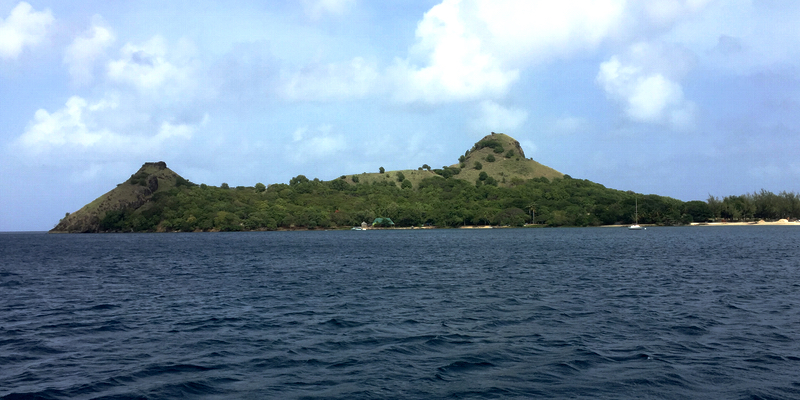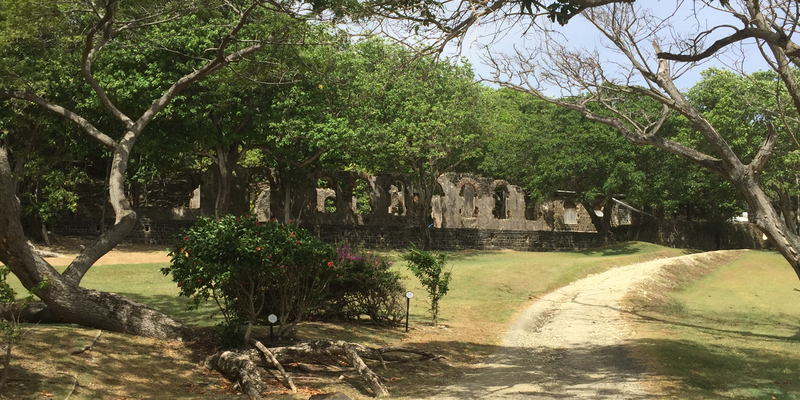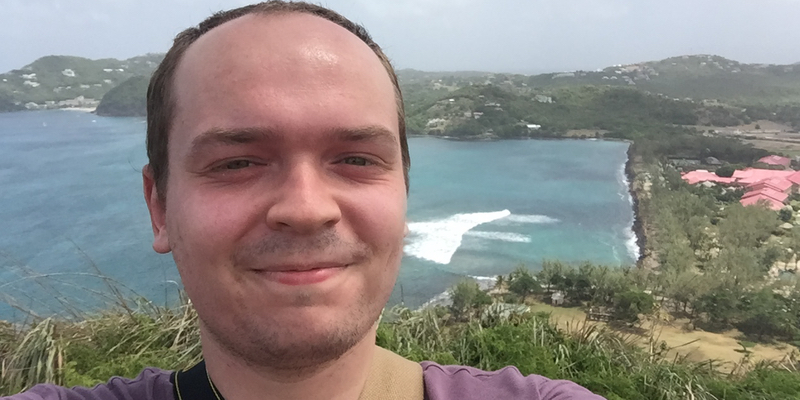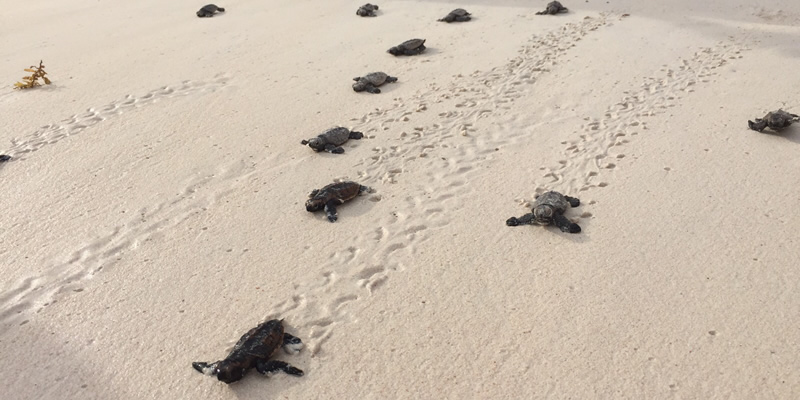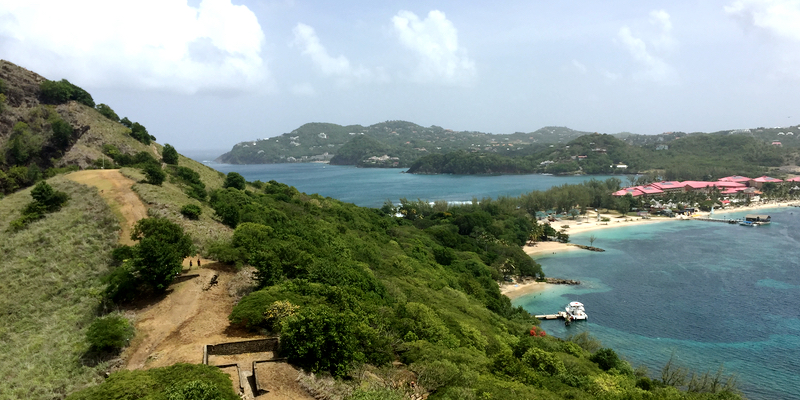
When it comes to national landmarks, St. Lucia has become synonymous with the twin-peaks of the Pitons. They’ve been fully merchandised by the Lucians, appearing on clothes, postcards, and even lending their name to the island’s national beer. But there are another pair of peaks, far less publicised and far more historically significant, that lives in their shadow: the two summits of Pigeon Island.
Pigeon Island is a national park that sits on the cusp of Rodney Bay, and you can turn up, pay a nominal fee of $7 ECD, and wander to your heart’s content. It was something I’d been keen to see from the moment I’d booked my holiday to St. Lucia, owing to its curtal importance to Lucian heritage. The island is a classically sequestered place, filled with grand tree lines and sprawling, open grassland, but it also holds mementos of great historical significance. At the height of Western colonialism St. Lucia was ruled 7 times each by English and French colonisers, and Pigeon Island served as a tactical look-out for both sides at various. The lasting legacy of Pigeon Island comes from the English Admiral Rodney, whose various achievements during the 7 Years’ War solidified England as the last colonial rulers of St. Lucia.
Relics of the island’s former life as a navel outpost have been preserved, with ruinous stone arches peeping out from under the treetops. The buildings here formed a look-out post for spying on the Spanish and French, and I could almost hear the clatter of nautical steel and musket balls as I walked alongside the weathered stones of what remained. The broken skeletons of these buildings cast intricate shadows on the hillsides, as if desperate to rebuild themselves in the shadow-lines of the forest floor. Regardless of who named themselves ruler of St. Lucia, it’s clear that the island itself has had the final word.
As you follow the paths of the park you’ll find the remnants of Fort Rodney, a small, once fortified look-out that where old blackened cannons still roost. The fort primarily overlooks Rodney Bay and the Caribbean Sea beyond, right down the western coast of the island. It’s a view that the postcards can’t quite capture; a patchwork of verdure and turquoise that shapes the western contours of the mainland. On the other hand, you can look out at the seemingly endless Caribbean Sea and feel a deep, soulful calm that comes from filling the horizon with the ocean. Standing there was the most peaceful I’ve felt in years.
The fort, however, is the lower of two peaks on the island, and it’s the taller sibling that really gets to the heart of why Pigeon Island matters.
Heads-up: the second climb is not for the faint hearted. You’ll need sturdy footwear, a good relationship with heights, and lots of determination.
The second peak on Pigeon Island, Signal Hill, is completely off-road. It’s just you, the rocks, and the promise of some incredible views once you’ve made the ascent. The hike reminded me of the St. Lucia that would have greeted the French and British colonisers. The landscapes were almost completely unshaped by mankind, filled with irregular lines and the curious appendages of truly wild trees. It was only when you looked closer, right beneath your feet, that you could just about pick out a lesser-trodden path that marked the footfall of a few brave souls desperate for the best views on the island.
It wasn’t an easy climb, but it was incredibly satisfying. A steep line of dark stones flitters in-and-out of sight between bracken and palm grass, keeping its exact nature secret as it leads you up the wild peak. It took some serious leg stamina to get to the top, but the fascinating, rambling path drew in some stunning colours where the emerald mountainside stepped into the blue collage of Rodney Bay. Moreover, the rolling back-and-forth of the path seemed a fitting analogue for the colonial tug-of-war that shaped modern St. Lucia, and served as an apt preface for the view from the summit.
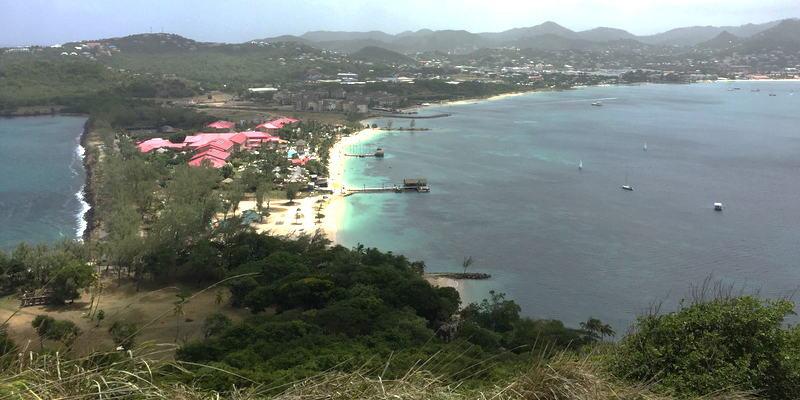
I’d never really had that “Top-of-the-World” feeling until the moment I pulled myself onto the small plateau at the top, the very top, of Pigeon Island. The 360 degree views confirmed the strategic value of Pigeon Island in a time marred by colonial skirmishes, but beyond that it offer a true insight on modern St. Lucia, an island that has risen above the squabbles of foreign invaders. There was a ghost of Martinique behind the low clouds, and the fluted green peaks of St. Lucia faded into view as they fingered apart the mist in the middle distance. You can see right over the marina in Rodney Bay, to the sheer cliff faces of the western coast, to the verdant ridges of Gros Iset.
It was vast and beautiful and breathtaking, not least of all because the bold sea wind at the summit buffeted the breath from my chest. It was an odd feeling of being the master of all I surveyed on an island that was, quite rightly, completely unconquerable. St. Lucia belongs to itself, and its distinctive landscapes are the irrefutable language of that freedom.
If you ever have the chance to see Pigeon Island, make it happen. It’s one of the most satisfying, challenging, and beautiful things I’ve ever done. You won’t regret it, Holidaymaker.

